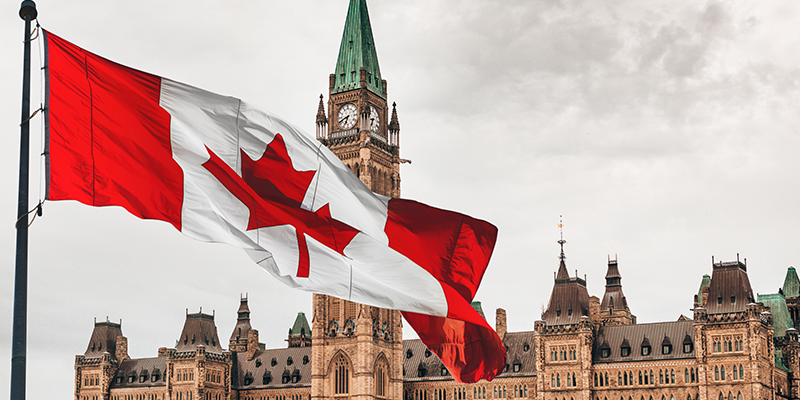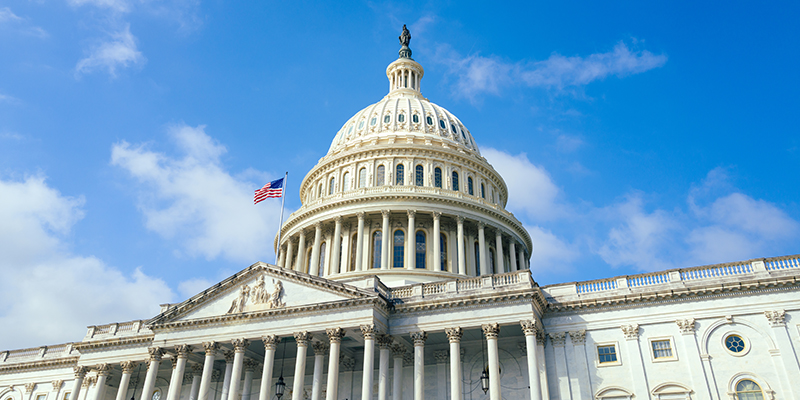By Brielle Scott
A new prime minister, major housing initiatives and rising trade tensions with the U.S. are reshaping Canada’s policy landscape. At CRE.Converge in Toronto this week, Barry Campbell, president, Campbell Strategies, and Natalie Dash, principal, Campbell Strategies, unpacked what recent political shifts mean for commercial real estate – from federal housing incentives to cross-border trade and energy policy.
Campbell started with an overview of the run-up to the recent election and Prime Minister Mark Carney’s rise to power.
The Liberal party started in pretty serious negative territory a few months before the election, Cambell explained: 26% or 27% behind the Conservatives. Everybody anticipated that the Conservative Party would sweep the election; that the Liberals would be punished for the 10 years of Justin Trudeau’s leadership and the Conservatives would be restored to power.
“In the weeks leading up to the election, every time [President Donald] Trump said something negative about Canada, or threatened tariffs against Canada, every time he said something about how Canada ought to be the 51st state, Liberal fortunes went up and Conservative fortunes went down,” Campbell said.
On election night, it was a dramatic liberal comeback – one of the great historic comebacks in political history, not just in Canada, but in democracies around the world – and Carney was elected prime minister.
“While that leadership race was going on, and Canada, quite frankly, was under attack by President Trump, threatened with tariffs and threatened sovereignty, Mark Carney was perceived as the man who could stand up to Trump, and he swept the race,” said Campbell.
“The prime minister has three distinct priorities and a lot of policies that underlies each of those priorities,” he added, noting the initiatives of diversifying Canada’s trade relationships, building resilience in the Canadian economy, and reasserting Canadian identity.
Campbell said Trump’s assault on Canada, its territory and its economy, was taken very seriously by Canadians.
“We think the president would like to bring Canada to its knees economically so that we will beg him to become the 51st state. But as [Ontario] Premier [Doug] Ford has on his [‘Canada’s not for sale’] hat, that ain’t happening,” said Campbell.
It is said that geography is history. The Ukraine is in the situation it’s in because it sits next to Russia; it has been caught between empires for more than 100 years.
“There is a reality to Canada’s geography,” said Campbell. “We share this continent with the United States. It has been easiest to trade with the United States, the biggest economy in the world, our neighbor to the south, and the trade flows have been north-south, and we’ve built two quite integrated economies.”
Campbell said that Canada has repeatedly been recognized as a country that should be less dependent on one trading partner.
“Imagine if you had a business and your one customer was 80% of your business. You’d say we have to have a different strategy,” he said.
As far as reasserting Canadian identity – Campbell isn’t worried.
“Trump has done us an enormous favor. He has caused Canadians to think hard about who they are… It has brought us back to our values as Canadians; why we care about each other the way we do. And there’s very little appetite for joining the United States.”
While trade diversification and building the Canadian economy will take time, “we’re seeing moves immediately by this government, moving very quickly to zero in on major projects that will create more opportunities to diversify trade,” said Dash, adding that conference attendees might have seen investments that have been announced or are coming into focus on pipelines, ports and pipelines from coast to coast to reduce the country’s dependency on the United States.
“We’ll continue to trade with the United States, but we’re very wary now of the overwhelming dependency,” said Campbell.
“We have a trade agreement with the United States [USMCA] and it covers quite a bit of cross-border trade – we trade $3 billion a day back and forth across that border. There’s no certainty that that agreement will continue.
Canadians have been engaged in negotiations on and off with the Trump administration to try to address the trade actions he’s already taken against Canada outside of the trade agreement, but we have very little confidence in any agreement the United States would sign with us. I don’t hold out a lot of hope for a broad-based agreement. And I certainly don’t think that any agreement that the United States signs under this administration can be counted on to last,” he added.
Housing is also a top priority for Prime Minister Carney, and his party has introduced the most ambitious housing plan since World War II.
“The scale of the commitments is unlike anything you’ve seen in Canada in decades,” Dash said. “Can these programs move the needle? Probably. Will they solve the crisis overnight? No.”
Canada has some structural barriers slowing down delivery, she explained. Zoning and permitting delays, shortages of skilled labor, high development charges, rising material costs, infrastructure bottlenecks – the list goes on.
While federal money can unlock projects, it needs to be paired with provincial and municipal cooperation to break down some of these other barriers and underlying challenges. Specifically, funding infrastructure, water, wastewater and roads. New homeowners are currently bearing the cost of that upfront, which is huge and significantly adds to the cost of housing prices.
“NAIOP’s Canadian chapters have been very clear with the federal government on what the challenges are,” said Dash. “We welcome the federal programs, but they must be paired with reforms on land use, development charges, permitting workforce development, and they should complement and not duplicate what the private sector is doing.”
The coalition of four NAIOP chapters in Canada has stepped up as a national leader in these discussions. For the first time, the chapters jointly submitted both a federal pre-budget brief and Build Canada Home submission, ensuring that the voice of the commercial real estate industry is at the table as the government makes its decisions and shapes the economic and housing priorities for the country.
In closing, Campbell added: “I want to commend NAOP for the work that you’re doing now and will continue to do – to be in the debate, to be in the discussion, to be a source of information, to be a reality check on the government. They need the advice that you can offer from your experience.”

This post is brought to you by JLL, the social media and conference blog sponsor of NAIOP’s CRE.Converge 2025. Learn more about JLL at www.us.jll.com or www.jll.ca.








